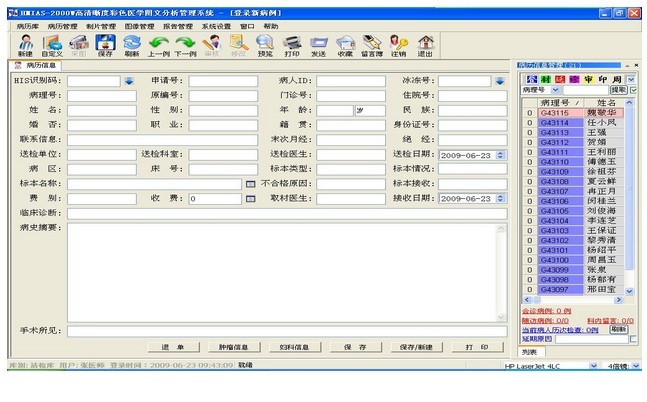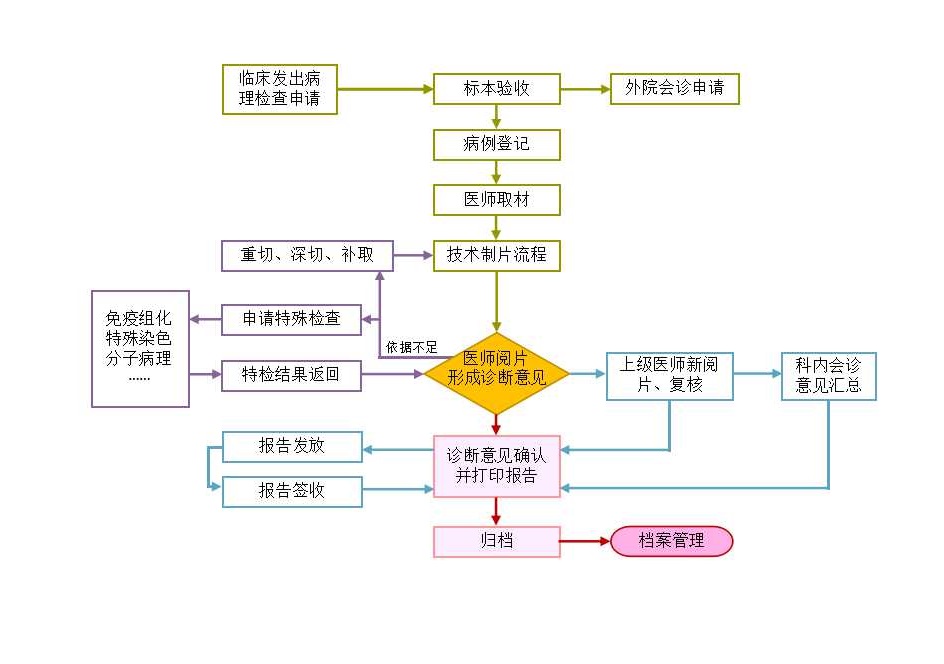Introduction to KPS-5000 Pathological Information Management System
时间:2023-10-28
 |  |
This system can comprehensively manage the workflow, medical record data, and images of the hospital pathology department. It can streamline the workflow of the pathology department, improve work efficiency, standardize the work system, make management scientific, report electronic, and image digital, thus achieving hospital informatization. This system supports flexible and universal third-party interfaces, which can interface with HIS, LIS, PACS, physical examination and other systems to obtain registered pathological information, write back data, extract medical record reports, image materials, etc. from this workstation.
Pathological Information Management
• HIS/PACS import of patient basic information • Automatically display the history of the currently opened case
• Comprehensive search and query of medical records for testing • Appointment information for medical laboratory tests
• Automatic display of delayed cases, operation of delayed report printing function • Automatic display of appointment medical records
• Collection function of interested cases • Display and output of list of medical records
• Liquid based cytology diagnosis description method (TBS) can be freely defined • General sampling process management
• Automatically display and track follow-up cases • Provide custom functionality for report templates, and intelligently associate report templates with test materials
• Support daily statistical functions for pathology • Automatically display arrears records
• Automatically display emergency cases • Establish basic information for patient examinations
• Automatically display records that need to be retrieved • Support multi-level diagnostic reports
The KPS-5000 pathological information management system of Kuaohai Company is designed according to international standard pathological department operating procedures. The entire process comprehensively manages the workflow, quality control links, medical record information, and image data of the department of pathology. It not only improves the management level of the department, enhances scientific research capabilities, reduces human errors, and reduces the risk of misdiagnosis, but also shares information with hospital HIS/PACS and other systems. Enable pathology departments to quickly access patient clinical data, and clinical departments can also browse pathological reports in a timely manner, providing faster and more accurate guidance for patient diagnosis and treatment.
The pathological information management system also has profound significance for clinical, scientific research, and teaching. Firstly, in terms of clinical research and teaching, after achieving data-driven management of data, it is easy to provide specimen image queries for various retrieval, statistics, and retrospective research work, and it is easy to organize and summarize, providing intuitive teaching image materials; Secondly, in terms of data archiving, the general image and typical lesions of surgical specimens are digitally collected to preserve first-hand clinical data. In terms of restoring the original appearance of the specimens and highlighting the overall pathological features, diagnostic basis is provided for pathologists, achieving permanent preservation of non physical pathological data. The implementation of the pathological information management system will provide strong and powerful guarantees for clinical, scientific research, teaching, and other aspects, marking that the pathology department has entered a stage of full informatization.




 鄂公网安备42090202000178号
鄂公网安备42090202000178号